Fulfilling our mission to protect and restore the Morro Bay estuary for people and animals requires a lot of hard work in the field. Read on to see what our staff and volunteers have been up to during the month of October.
Fish trawl study
We started off the month by helping Cal Poly Professor and California Sea Grant Extension Specialist Dr. Jennifer O’Leary conduct fish trawls in Morro Bay. In 2007, seven different sites around Morro Bay were trawled to catalog what species were present. Now, after the decline of eelgrass beds in the bay, the same sites are being trawled again to see if the loss of eelgrass has impacted fish populations.
Our staff was more than happy to spend the week out on a boat in Morro Bay to help out on this project.
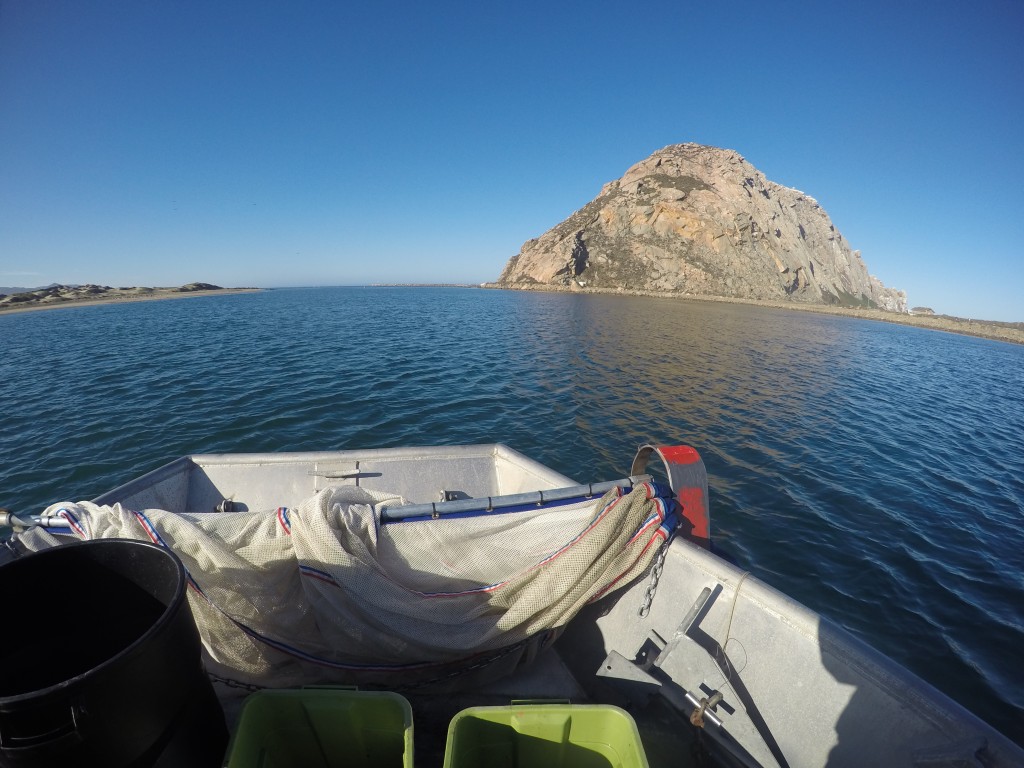
After hauling in the net, we sorted and identified the contents.
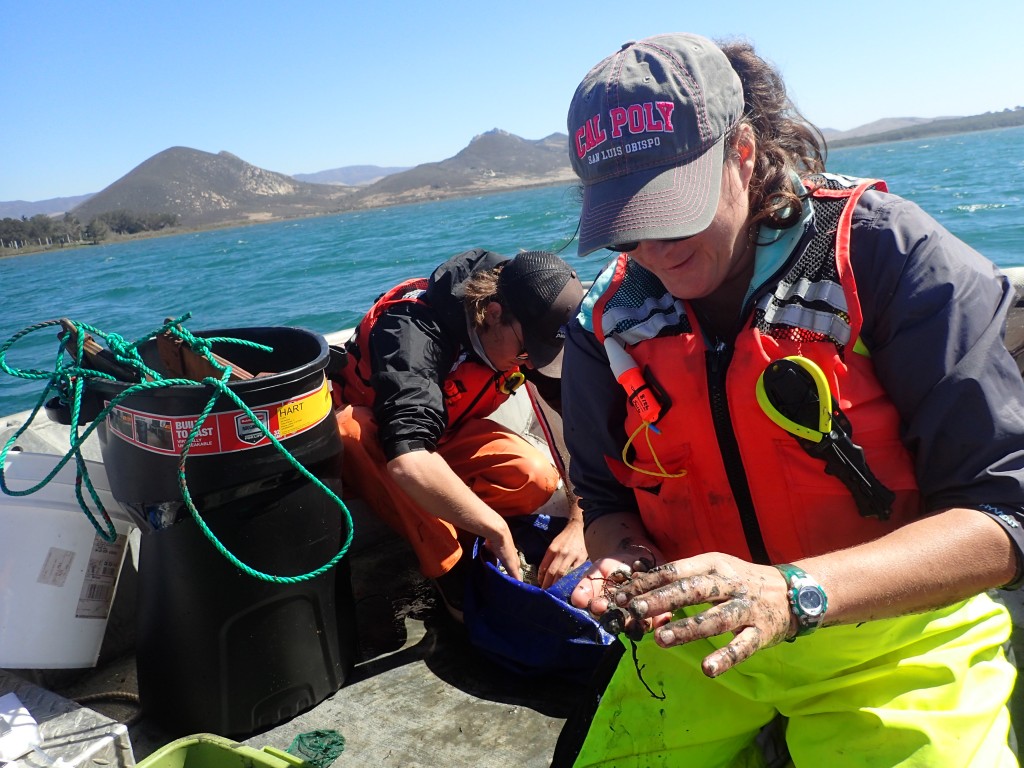
All fish were identified and measured before being released back into the bay.
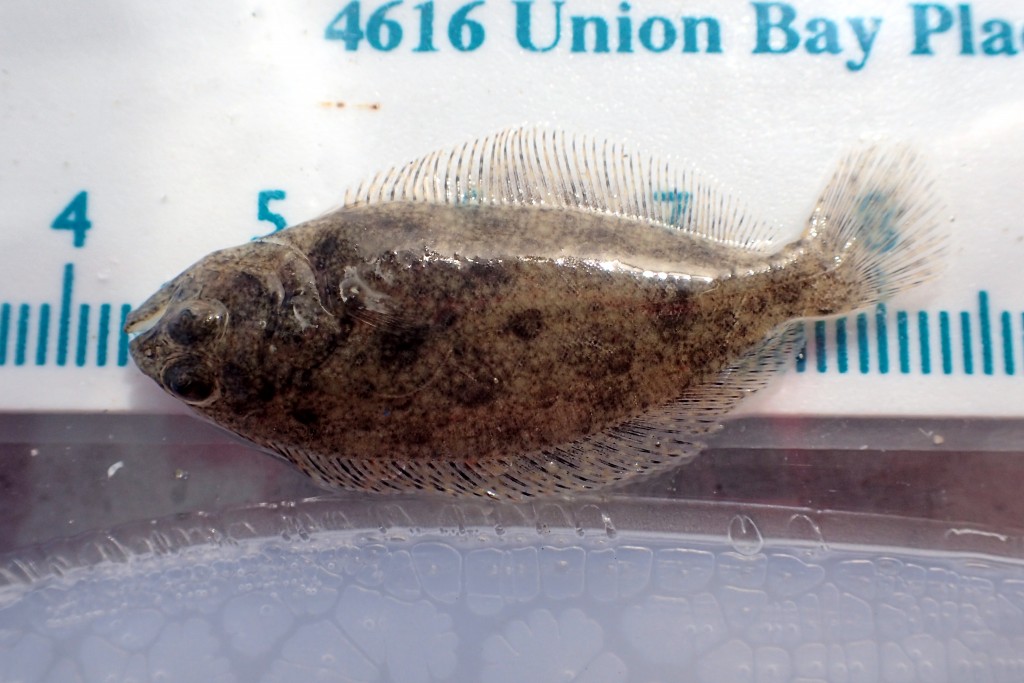
Stay tuned for more information about this fascinating study.
Eelgrass monitoring
We continued monitoring the eelgrass restoration beds planted in 2012–2014. We are excited to say that we are seeing new patches of eelgrass appearing in the bay, including all the way back by Cuesta Inlet. We will continue to keep an eye on these patches to see if they survive.
Along with monitoring the restoration beds, we started the fall round of bed-condition monitoring. This monitoring takes place at the five most significant beds throughout Morro Bay.
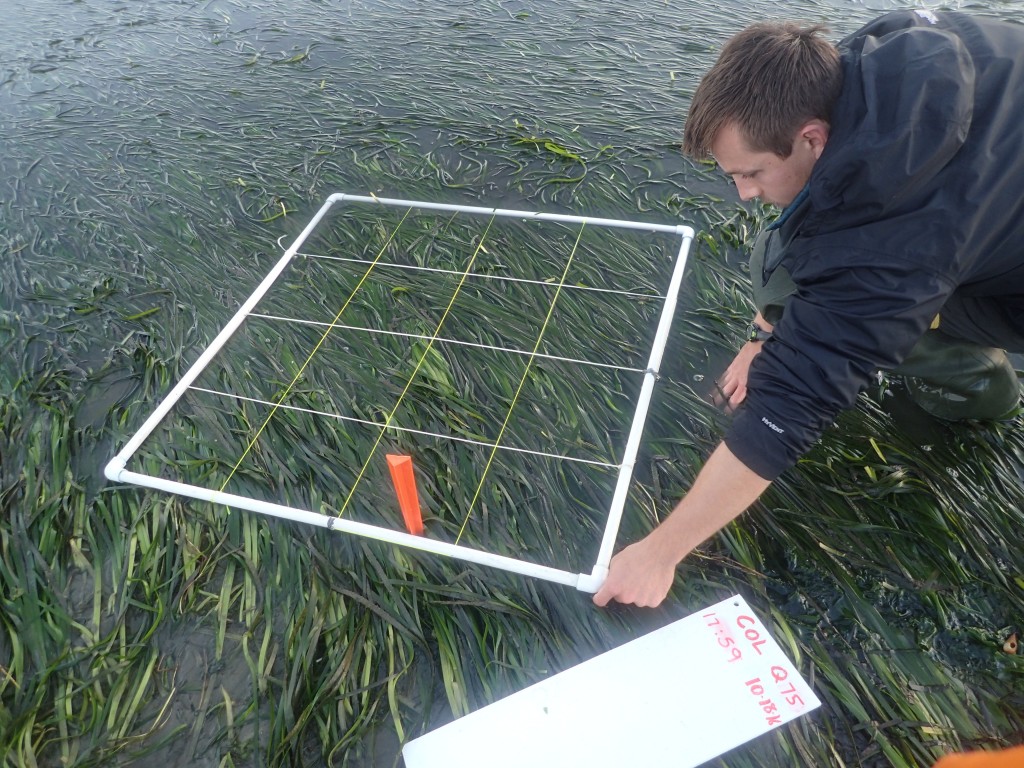
The goal of this monitoring is to determine the eelgrass bed condition through density, patchiness, and observational data. Like our other eelgrass monitoring, this is done in collaboration with Cal Poly.
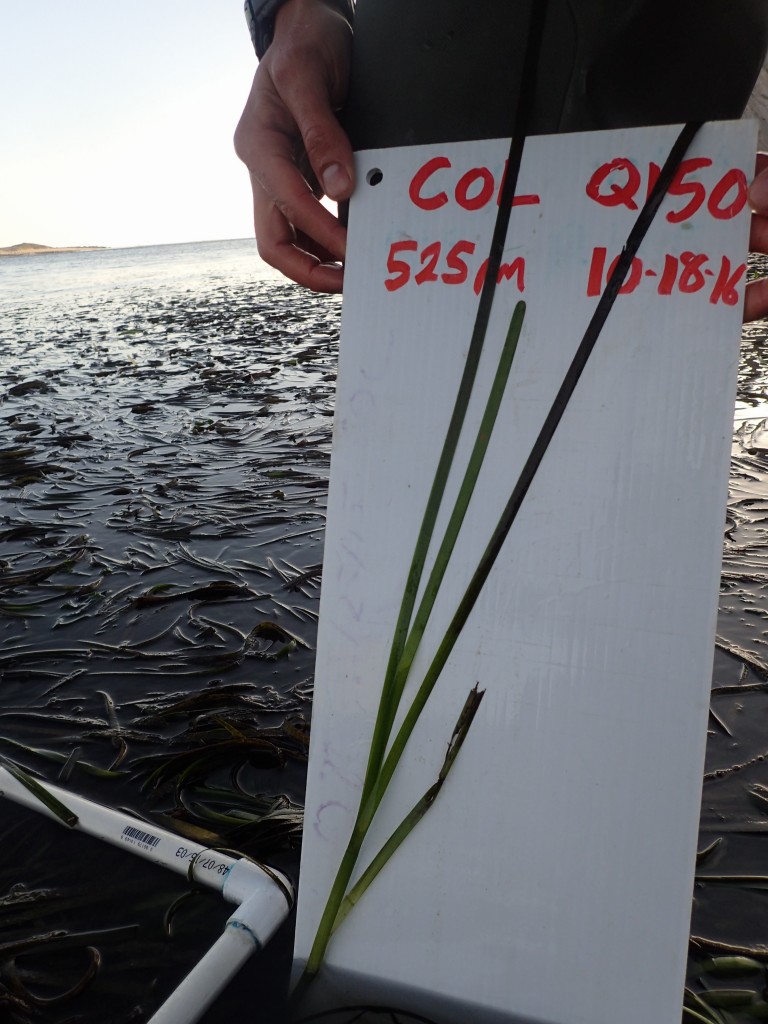
We place blades of eelgrass on a white board and take a photo. This photo will later be analyzed in a computer program to look at the percentage of the blades covered in black spots and epiphytes and/or epifauna. This will help us to determine the overall health of the blades.
Professional development
It has also been a busy month for conferences. Karissa attended the California Aquatic Bioassessment Workgroup in Davis, CA to hear updates on bioassessment work occurring in the state. The following week, Karissa and Carolyn both attended the 2nd Steelhead Summit, put on by the Salmonid Restoration Federation. The first day of the conference highlighted work on recovery planning, steelhead genetics, coastal monitoring status, fish passage planning, and water conservation efforts. The second day included a fieldtrip to visit water conservation projects in the county. This tour took place in the rain, so we got to see the projects in action! One of the projects on the tour was to Cal Poly’s Escuela Ranch, where the Estuary Program worked with the California Conservation Corps and Cal Poly to install a rainwater harvesting project.
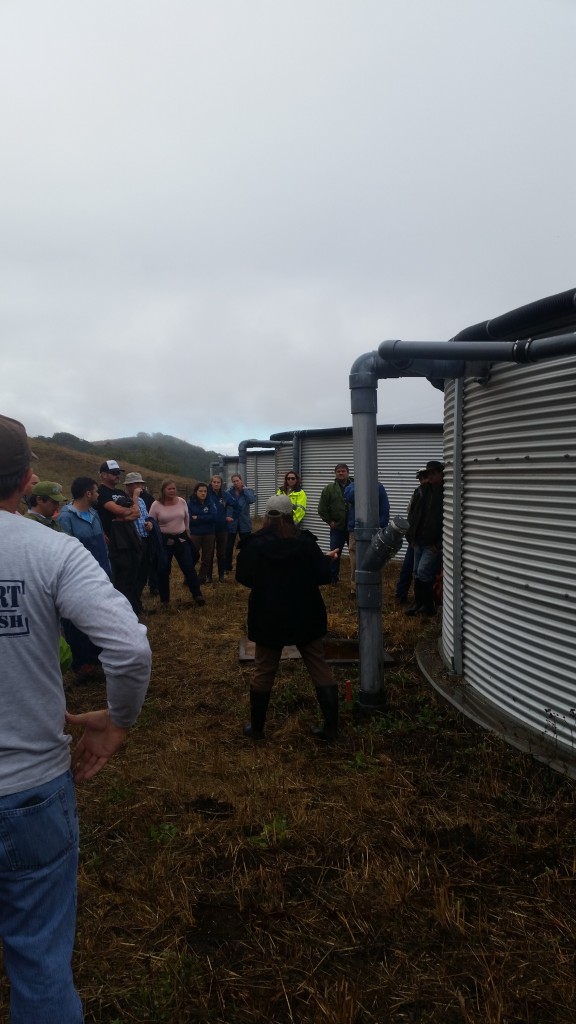
Volunteer appreciation dinner
We are so thankful for all of our volunteers that help us protect and restore the Morro Bay estuary. Each fall we take the opportunity to thank each of them in person at our Volunteer Appreciation Dinner. Read more about this event and our two volunteers of the year.